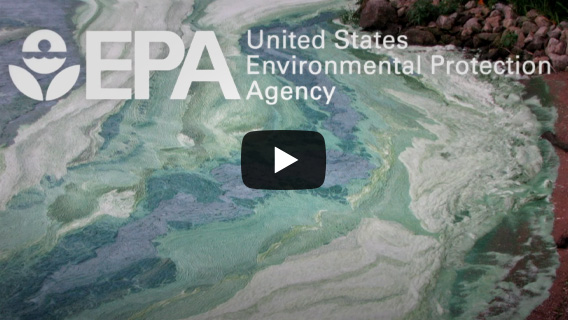The significant increase in recent years of nitrogen and phosphorus (nutrient pollution) in water bodies across the country has intensified water quality problems. Excess nitrogen and phosphorus in Utah waters harm our streams, rivers, and lakes.
The Division of Water Quality (DWQ) is currently at work on a nutrient reduction plan tailored to the unique needs of Utah waters. DWQ has already identified numerous watersheds in the state that are affected by high nutrient levels. In an effort to reverse this disturbing trend, DWQ, in partnership with a comprehensive team of key stakeholders, established a working group to develop acceptable benchmarks for nitrogen and phosphorus and develop nutrient reduction programs to reduce nutrient loads entering the state’s waters.
What is Nutrient Pollution?
Nitrogen and phosphorus are nutrients that are a part of all aquatic ecosystems and support the growth of the algae and aquatic plants that provide food and habitat for fish and smaller aquatic organisms. However, excess nitrogen and phosphorus, or nutrient pollution, can result in serious water quality problems. It impairs drinking water, endangers aquatic life, and threatens recreational uses. Nutrient pollution can also pose serious risks to human and animal health and damage to the economy.
Eutrophication
Excess nitrogen and phosphorus in the water causes algae and some types of bacteria to grow faster than ecosystems can handle, a process known as eutrophication. Large growths of algae, called algal blooms, reduce oxygen in the water, stressing or killing fish. Algal blooms also harm water quality, food resources and habitats. Some blooms are harmful to humans because they contain bacteria that can produce toxins that can make people sick if they swim in or drink the contaminated water.
Utah’s Adaptive Management Approach
The Division’s goal is to protect Utah’s waters for their beneficial uses while taking into consideration the respective characteristics and potential of these waters. Given the wide diversity of streams and lakes throughout Utah, the levels of nutrients protective of the beneficial uses in one type of stream will be different in another type of stream. DWQ, in collaboration with a team of core stakeholders, has assembled a toolbox of comprehensive and adaptive solutions to tackle the problem of nutrient pollution in Utah. Strategies to address nutrient pollution include:
- Nutrient standards that limit pollutants and protect water bodies for their beneficial uses.
- Statewide monitoring to identify water bodies with nutrient problems.
- Site-specific strategies that account for the differences in water bodies and their sources of nutrient pollution.
- Technology- based effluent limits for wastewater treatment discharges to be phased in over time.
- An environmental stewardship certification program, along with guidance on the application of Best Management Practices (BMPs), for agricultural nonpoint sources of nutrient pollution.
- Funding to address nonpoint sources of nutrient pollution.
- Watershed scale nutrient reduction strategies, with an initial focus on headwaters.
Contact Us
- Jeff Ostermiller (jostermiller@utah.gov) (801) 536-4370
Listserv
To automatically subscribe to Email notifications about the Nutrients in Utah’s Waters Website, send a blank Email from your Email account to:
subscribe-deq-nutrients@list.utah.gov


